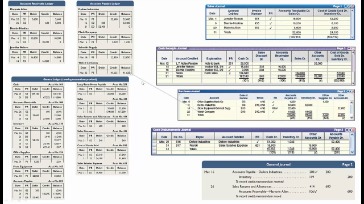Content

Conditions and exceptions apply – see your Cardholder Agreement for details about reporting lost or stolen cards and liability for unauthorized transactions. When you use an ATM, in addition to the fee charged by the bank, you may be charged an additional fee by the ATM operator. See your Cardholder Agreement for details on all ATM fees. Have questions about self-employment taxes and other small business tax issues?

Here is how to fill out a Schedule C for a sole proprietor or single-member LLC. You should prepare a detailed profit and loss statement to help with preparing your schedule C. You can calculate your taxable income based on the information you enter on the Schedule C tax form.. Enter the taxable income from the Schedule C Form 1040 on your 1040 tax form to calculate your overall tax liability. Let’s look at the steps for calculating your Schedule C income.
IRS Form 1040 Schedule C: Profit or Loss from Business
Section 22 is where you put what you paid for supplies to run your business. You can deduct the cost of books, professional instruments, and equipment, for example. Section 20 includes money paid for rent or lease, including vehicles, machinery, and equipment, and other business property. In section 16, you will include all interest you pay to banks, such as mortgage interest paid on a building you use for your business, interest paid on your car loan, or other interest you paid on a business loan.
- If you’ve never filed a Schedule C, you’re bound to feel confused by some of the language you encounter.
- Accounting method—Show which method of accounting you use.
- If your business doesn’t manufacture goods or buy and resell merchandise, you can leave Part III blank.
- If you freelance, have a side gig, run a small business or otherwise work for yourself, you may need to file a Schedule C at tax time.
However it is more common to be unprofitable in the first 24 to 36 months of operation. Did not have inventory at any time during the year. Part III pertains to the “Cost of Goods Sold” in Part I . If your business doesn’t manufacture goods or buy and resell merchandise, you can leave Part III blank.
Other Business Tax Forms
Bank products and services are offered by Pathward, N.A. Payroll, unemployment, government benefits and other direct deposit funds are available on effective date of settlement with provider. Please check with your employer or benefits provider as they may https://quick-bookkeeping.net/gasb-addresses-accounting-changes-and-error/ not offer direct deposit or partial direct deposit. Faster access to funds is based on comparison of traditional banking policies for check deposits versus electronic direct deposit. For a full schedule of Emerald Card fees, see your Cardholder Agreement.
So, if you earned money working for yourself—whether it’s a side hustle or a full-time gig—you have to fill out a Schedule C to report income and expenses. DE, HI and VT do not support part-year/nonresident individual forms. Most state programs available in Who Files Schedule C: Profit Or Loss From January; software release dates vary by state. State e-File for business returns only available in CA, CT, MI, NY, VA, WI. One important thing to note is that a business expense must be ordinary and necessary to be listed as a tax deduction on Schedule C.
Report
However, if you’re claiming vehicle expenses on Line 9, but you aren’t claiming depreciation for any assets, then complete section IV instead of Form 4562. However, if you’re using the cash method of accounting, then you’re required to use the cost method to value inventory. The other option listed is “lower of cost or market.” This means that you’re valuing your inventory at either the historical cost or the current market value, whichever is lower. If you decide to change how you account for inventory, you’ll need to file Form 3115. Refer to IRS Pub 538 for more information on inventory valuation methods. Income generated through a hobby or other non-business activity should be reported on Form 1040, Schedule 1.
If you are the sole owner of a business or operate as an independent contractor, you will need to file a Schedule C to report income or loss from your business activities. When you’re self-employed, you have to pay the self-employment tax. The key to lowering your tax bill is through claiming deductions. NerdWallet strives to keep its information accurate and up to date. This information may be different than what you see when you visit a financial institution, service provider or specific product’s site.